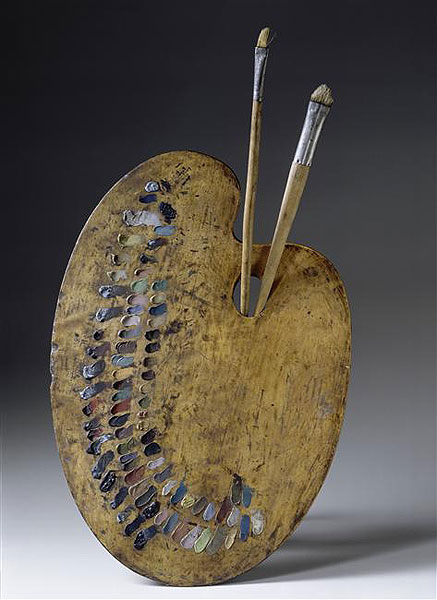On 30 Aug, 2011 With
Palettes of Famous Painters Some artists follow Whistler, who believed the management of the palette to be the basis of good painting; others stick to Isaac Newton’s theory of colour. Some artists mix every gradation of colour they will need for a painting before they start, others as they need them. “My freshly arranged palette, brilliant with contrasting colors, is enough to fire my enthusiasm,” noted Delacroix in his Journal in 1850. The French artist was meticulous in his arrangement of colours, and when unwell, would take his palette to bed and spend the entire day just mixing new shades.
Read More
On 12 Aug, 2011 With
Artist in his Studio This is a view of Claude Monet standing in his first studio amidst his favorite canvases. The light of the afternoon is almost palpable. This room located in his main house at Giverny was turned into his sitting-room after 1890. The picture was made in springtime according to the tulips behind Monet. The photo reveals how much the painter loved flowers. There were at least six vases in his studio on this day! When Monet became successful, he built a new house in the corner of his garden, where he moved his studio. He had now a well lit large room to work in and to store his paintings. The former studio became a place where he used…
Read More
On 5 Aug, 2011 With
Henri Fantin-Latour (14 January 1836 – 25 August 1904) was a French painter and lithographer best known for his flower paintings and group portraits of Parisian artists and writers. As a youth, he received drawing lessons from his father, who was an artist. In 1850 he entered the Ecole de Dessin, where he studied with Lecoq de Boisbaudran. After studying at the École des Beaux-Arts in Paris from 1854, he devoted much time to copying the works of the old masters in the Louvre. Although he befriended several of the young artists who would later be associated with Impressionism, including Whistler and Manet, Fantin’s own work remained conservative and classical in style. Whistler brought attention to Fantin in England, where his still-lifes sold so well that they were “practically unknown in France during his lifetime”. In addition to his realistic paintings, Fantin-Latour created imaginative lithographs inspired by…
Read More



